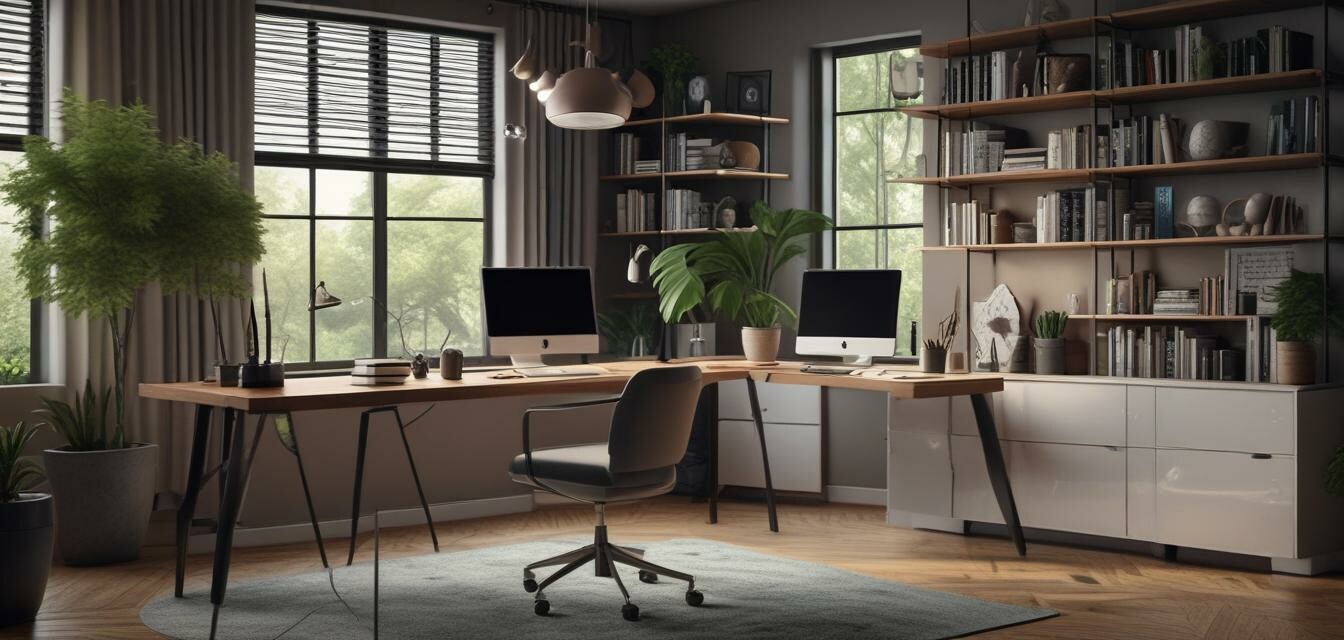
Adapting home offices to new work styles in 2025
Key Takeaways
- The home office design landscape is evolving to accommodate diverse work styles in 2025.
- Flexible furniture configurations are on the rise, allowing for both collaborative and individual work.
- Ergonomics is a top priority, ensuring comfort and productivity for long hours.
- Sustainable and eco-friendly materials are gaining popularity among consumers.
- Technology integration is essential for a seamless work-from-home experience.
As we glide toward 2025, the landscape of home office furniture is undergoing significant transformation. Many factors contribute to changing work styles, including the rise of remote work, the need for flexibility, and a growing emphasis on wellness. In this article, we'll explore how these elements shape the way we design and utilize our home offices.
The rise of new work styles
The line between work and home life continues to blur, leading to diverse work styles tailored to individual needs. Here are some emerging trends you'll see in 2025:
- Hybrid work environments: Many professionals are adopting a blend of remote and in-office work, necessitating flexible office setups.
- Flexible furniture: Modular desks and ergonomic chairs that can be repositioned help accommodate both solitary tasks and collaborative projects.
- Increased focus on wellness: Designs promoting physical and mental well-being are shaping office layouts, integrating plants, natural light, and comfort-focused materials.
Adapting furniture to meet diverse needs
As work styles become more varied, furniture must adapt accordingly. Here's how current trends reflect these changes:
| Furniture Type | Traditional Use | New Adaptation |
|---|---|---|
| Desks | Fixed workspaces | Adjustable, multi-use work surfaces |
| Chairs | Standard sitting | Ergonomic designs for long hours |
| Storage | Static, large units | Mobile storage solutions |
Collaboration spaces
One significant shift in home office design is the creation of collaboration-friendly spaces. With many teams now working remotely, the need for inclusive environments where people can come together, even virtually, is heightened. This requires:
- Compact meeting areas that facilitate video calls and brainstorming sessions.
- Easy-to-move furniture that can be reconfigured for various purposes.
- Integrative technology to facilitate virtual collaboration.
Embracing sustainability in design
Another significant trend is the commitment to sustainable materials in home office furnishings. Here are some key points regarding sustainability:
- Consumers are increasingly seeking furniture made from eco-friendly materials, such as reclaimed wood and recycled metals.
- Brands are responding by utilizing sustainable manufacturing processes.
- Furniture with longevity and durability is preferred, reducing waste in the long run.
Integrating technology
With the rise of remote work, technology integration in home office furniture is crucial. This includes:
- Built-in charging stations in desks.
- Smart lighting systems that adjust based on the time of day.
- Device-friendly work surfaces that accommodate multiple screens.
Home office layout examples
To better grasp how to implement these changes in your own home office, consider the following layout ideas that align with the trends of 2025:
- Multi-functional workspace: A corner desk with a foldable table and an ergonomic chair can convert your workspace into a creative area during breaks.
- Compact collaboration areas: Use movable partitions to create small group spaces that can easily revert to a more open design.
- Zen zones: Incorporate areas for relaxation or mindfulness—such as a small reading nook with plants and natural materials.
Conclusion
As we look forward to 2025, the evolution of home office designs will focus significantly on creating environments that are adaptable, sustainable, and tech-savvy. Embracing these changes will lead to more functional and appealing spaces that enhance productivity while also tending to wellness. For more insights on enhancing your workspace, visit our Tips and Inspiration section or explore our Office Desks collection.
Beginner's Section
If you're just starting to build or revamp your home office, here are some quick tips:
- Choose furniture that offers versatility.
- Prioritize ergonomics for health and comfort.
- Embrace natural lighting and incorporate green plants.
Pros
- Flexible workspaces improve productivity.
- Sustainable furniture aligns with eco-conscious values.
- Technology integration simplifies remote work.
Cons
- Potentially higher costs for high-quality furniture.
- Finding the right balance between style and functionality may be challenging.